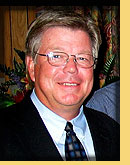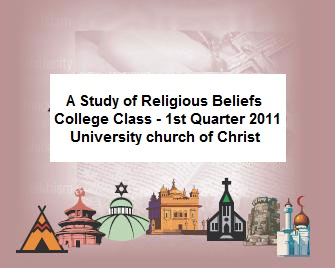Home | About Us | Directions | Bulletins | Sermons & Audio | Cross Of Christ Studies | Classes | Student and Parent Resource Page | Dangers Facing the "Non-Traditional"
A Reasonable Doubt?
by Bubba Garner
How would you like it if someone spoke about your life based on one thing you said or did? Without any input from you, they chose a phrase or event that they thought best summed up how you should be remembered? That’s what we have with the apostle we often refer to as “doubting” Thomas. Even in nonreligious settings, wherever there is a dissenting voice or a lone skeptic, that person is called a “doubting Thomas.”
Thomas was not viewed that way by his fellow apostles. According to John’s gospel, the only thing they called him was Didymus or “the Twin” (John 11:16, 20:24, 21:2). Not only that, but when Jesus insisted that He and the apostles go to Jerusalem, a place where they were afraid for the Lord’s safety, it was Thomas who insisted, “Let us also go, that we may die with Him” (John 11:16). In other words, if the enemies took Jesus, they would have to go through Thomas first. Yet, no one ever refers to him as “fearless Thomas.”
His unfortunate nickname comes from the statement he later made after hearing about Jesus’ resurrection from the dead. “Unless I shall see in His hands the imprint of the nails, and put my finger into the place of the nails, and put my hand into His side, I will not believe” (John 20:25). Instead of casting doubt on his faith, what are some lessons we can learn that will help us in our own belief in Jesus as the Christ, the Son of the Living God?
It is not wrong to demand evidence. As one of the chosen twelve, Thomas had been “all in” before. Remember, he was prepared to fight to the death for Jesus. When the Lord did die, the apostles were so convinced that the cause was over that the first report of His resurrection “appeared to them as nonsense” (Luke 24:11). Before Thomas could consider himself “all in” again, he wanted to see and handle the evidence.
The Lord does not ask His disciples to follow Him with a blind faith. When Jesus appeared to Thomas, He did not withhold proof from him. Rather, He invited careful investigation: “Reach here your finger, and see My hands; and reach here your hand, and put it into My side; and be not unbelieving, but believing” (John 20:27). Luke also wrote about the post-resurrection appearances of Jesus, that He “presented Himself alive...by many convincing proofs” (Acts 1:3). The truth has nothing to hide. The more we look into it, the stronger our convictions become.
Each person must have their own faith. Thomas’ request to examine the Lord was not an unreasonable one. He simply wanted the same opportunity that was made available to the other apostles. A week earlier, Jesus appeared to them when Thomas was not present and “showed them both His hands and His side” (John 20:20). When they later told Thomas, “We have seen the Lord” (20:25), he didn’t just take their word for it. He wanted to see it for himself. He wanted to have his own faith.
While we certainly learn about the gospel from other people, we must eventually reach the point where we stand on our own convictions. This very attitude is seen in the Queen of Sheba’s statement after testing the wisdom of Solomon. “It was a true report which I heard in my own land about your words and your wisdom. Nevertheless I did not believe the reports, until I came and my eyes had seen it. And behold, the half was not told me” (1 Kings 10:6-7). How much more ready will we be to give an answer for our faith when we can reason from that which we have personally experienced? No longer is it based on what our parents or our preacher knows. It is rooted in “for the Bible tells me so.” It is our own.
Honest evaluation calls for a humble confession. Thomas asked to see all the evidence; Jesus held nothing back. There is no record of the apostle following through with his request to put his finger in the nail prints or his hand into the wounded side. What is recorded are the words he spoke: “My Lord and my God” (John 20:28)! Having seen for himself the proof of Jesus’ resurrection, he could do no less than to confess His deity. Any other response would have been dishonest to the facts of the case.
Many people are like Thomas in that they ask for proof from the word of God. But when they are confronted with the inescapable truth, their conclusions do not follow the evidence. “That’s your opinion.” “I don’t believe that.” “That’s just your interpretation.” “My God is bigger than that.” It takes honesty to want to see things for yourself. It takes humility to go wherever the truth leads you and confess, “My Lord and my God!”
The ability to physically see and touch Jesus after the resurrection was limited to a 40-day window. But we can still see Him through the testimony of those who did and come to believe that He is the Christ, the Son of God. In fact, Jesus said we are “blessed” (John 20:29) when this happens. Without a doubt.
Other Articles by Bubba Garner
Blessed Among Women
How to Make a Bad Decision
Press Along to the Goal
A Resolution
Don't Quit







